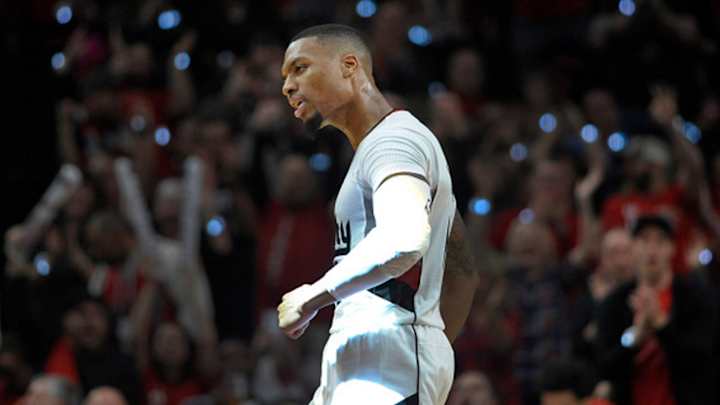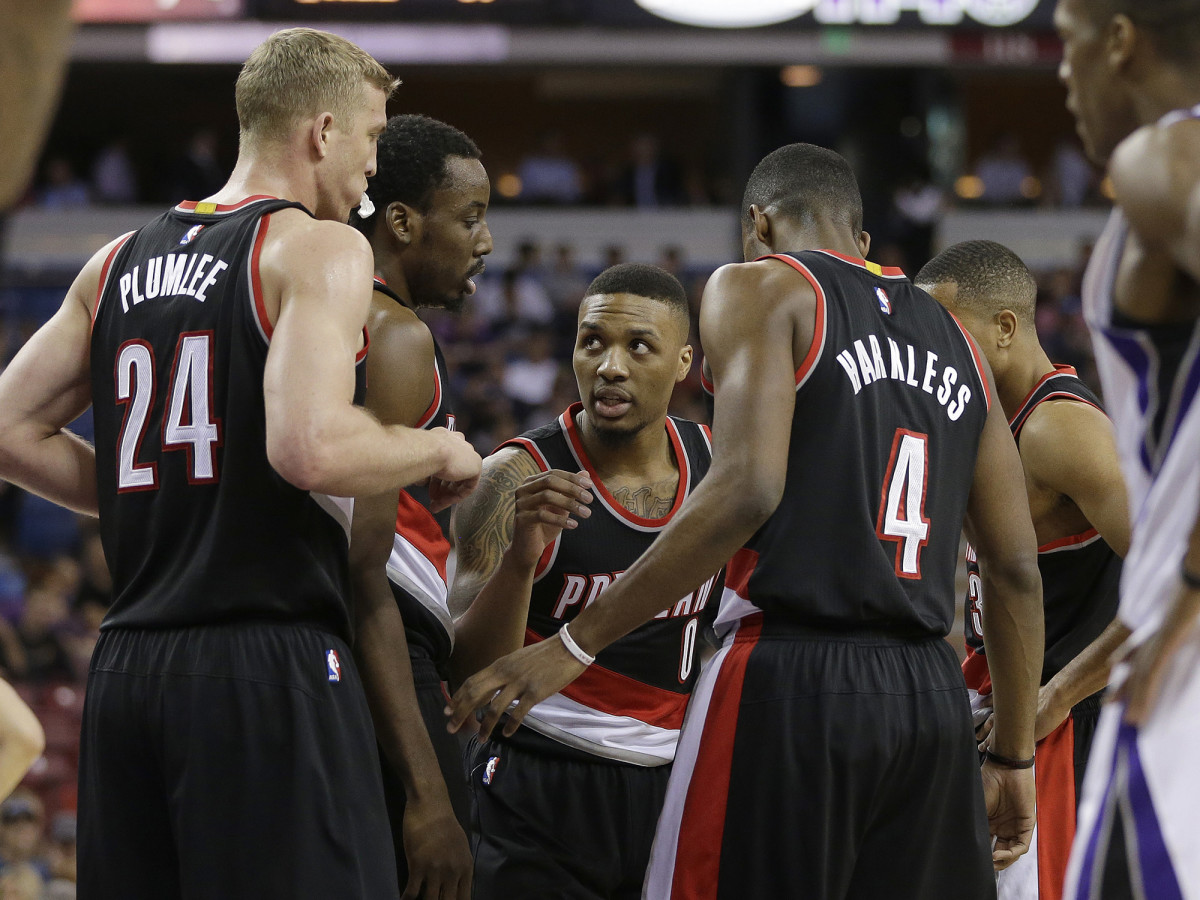Happy Lights: How The Trail Blazers Brighten The NBA's Daily Grind

The walk from the Barclays Center floor to the arena’s visiting team locker room winds underneath the stadium’s lower bowl and down a white, angular corridor. It's a narrow hall, often cluttered with television network cables and hulking duffle bags of athletic equipment. Fluorescent lights brightly bounce off the walls’ eggshell paint.
On this November night, stepping into the away team’s quarters is practically blinding to the untrained eye. Every NBA locker room features a set of tables that offer its players a selection of cough drops, chewing gums, protein bars and other small goodies partitioned in tupperware containers. The Portland Trail Blazers also travel with a supply of Sad lights.
Four panels sit in a square at the center of the room, beaming a cool, bright light onto each wall of player lockers that’s substantially brighter than the gleam in the bowels of Barclays. “The happy lights,” as Portland center Mason Plumlee called them, became a staple of Blazers road games during the 2015–16 season.
Then And Now: The Evolution Of LeBron James
The lights are named for what they are designed to counteract: Seasonal Affective Disorder, a depression-adjacent condition brought by a dearth of exposure to natural sunlight. The lighting has been installed indoors all across the characteristically overcast Pacific Northwest. “My wife has one of the lights right by our living room table,” said Blazers head coach Terry Stotts.
The human body’s production of melatonin, the hormone that induces sleepiness, is directly impacted by a person’s lack of exposure to natural and artificial light, said Patricia Rizzo, the Senior Lighting Applications Developer at Philips Lighting. It’s the very phenomenon that causes you to feel lethargic and drowsy during winter months which feature less sunlight.
In turn, insufficient exposure to light can prevent the body from establishing a healthy circadian, or daily, energy cycle—an especially challenging dilemma for NBA players tasked with performing at their highest levels after the sun sets. Portland may have uncovered a cheat code for eliminating that challenge all together. By implementing their artificial lights on game nights, the Blazers are essentially re-setting their player’s body clocks. “By playing close to the circadian peak,” Rizzo told SI.com via email. “Performance professional athletes demonstrate a significant athletic advantage over those who are playing at other times.”

The Blazers have long installed Sad lights within the ceilings of their Moda Center home locker room and above their practice facility court. “Our practice simulates the lighting at an arena,” Stotts said. It’s long been a staple of Portland’s home routine, illuminating the daily minutia of professional basketball. “You’re indoors all the time,” Plumlee said. “The weight room’s inside. The court’s inside. It’s supposed to offset that.”
Portland’s head athletic trainer Geoff Clark began taking the light show on the road at the onset of last season, as the Blazers searched for new life post-LaMarcus Aldridge. Clark took players by surprise before their Oct. 30 contest at the Phoenix Suns, stationing one Sad light next to Chris Kaman’s locker. “At first, I used to come in,” Portland All-Star Damian Lillard said, pausing to wince. “And be like, ‘Man, it’s bright in here!’ A year later, the Blazers players have lost count of how many lights have joined the team’s traveling party. “I think it wakes you up,” Lillard continued. “I feel like it brings a certain type of energy to the locker room and it’s become a part of our preparation now.”
From Rival To Ally: Charles Oakley Helps Jayson Williams Rebound From Addiction
The tradition continues past pregame. Opposing arenas’ electric bills may spike when the Blazers’ are in town, as Portland keeps the lights on until after players depart the locker room to retake the floor for the second half. “We try and have the lights in the locker room at least as bright as the arena” Stotts said. “So that when you come into the locker room at halftime, the lights don’t bring you down.”
Some of Portland’s players are skeptical. “I feel like I just get myself prepared for the game and that’s that,” said sharpshooter Allen Crabbe. Others have downright rejected the principle. “I ain’t really into all that scientific shit,” said Blazers forward Ed Davis. Plumlee suggested the lights could even cause a negative reaction. “They don’t give me headaches but I’ve heard some people complain about them,” he said.
One thing is for certain: The Blazers’ lights consistently brighten gloomy visiting team quarters, where players are often wedged into locker rooms unfit to house 12 to 15 seven-foot men. After the Blazers’ dispatched the Brooklyn Nets 129-109 on Nov. 20 and the lights were stowed away, the obvious shadows reemerged in the corners of the room. “Why’s it so dark in here?” forward Noah Vonleh said.
